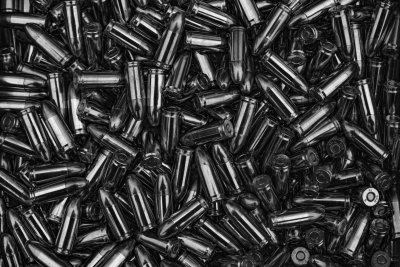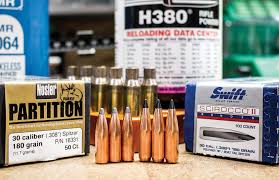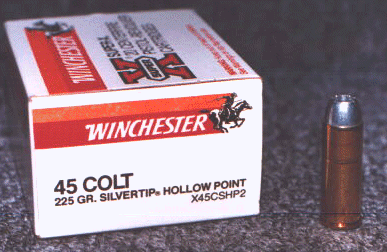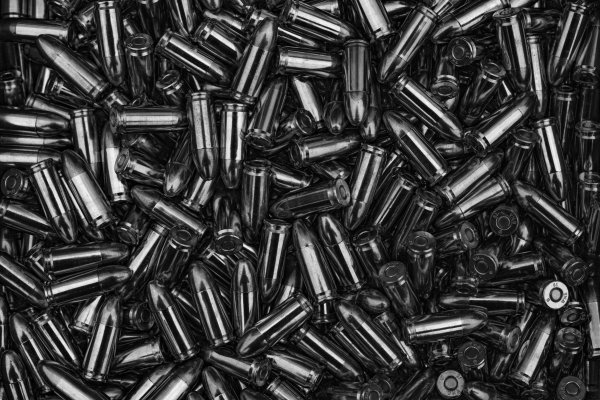
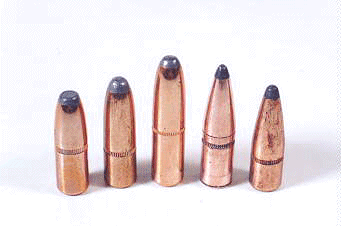
types of .38 & .30 cal. bullets
What type for you?
In the lower powered pistol bullets, the best choice is a lead bullet. They are cheap and work fine. I would not use them at velocities greater than about 900 FPS, because at that kind of charge, some leading will occur. The
exception is a lead bullet with a copper “gas check” on the bottom of it. For the “hot” loads, certainly magnum loads and standard rifle loads, some sort of copper jacket is needed. A .30 cal. “plinker” is nothing more than a little
copper “bucket” with a round nose lead bullet sitting in it. You can load this type of bullet up to speeds approaching 2800 FPS in high power rifle cartridges.
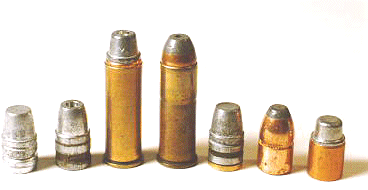
All lead bullets you use, should have been sized and lubricated. This insures a good fit in the case and helps to prevent leading of the barrel. Hollow point bullets are when you want added expansion for hunting game. This is the
time to use hollow points. For target shooting, non-hollow points should be used (the exception being HPBT; see below). Cast hollow points can be slightly less “true” than solid bullets. With the spin of the rifling, it can cause a
wobble. This would only be a problem with higher velocities and spins, but if you want to see what a bad hollow point can do, drill some holes in the end of a few lead bullets, diliberately a hair off-center and watch what kind of
grouping you get with them. All factory bullets are made carefully and this is not much of a concern.
In fact, the preferred BEST Rifle bullets for long range and accuracy are usually the HPBT, which is the Hollow Point, Boat Tail bullets of several manufacturers. Sierra calls their whole series of HPBT bullets, the
“MatchKing” series.
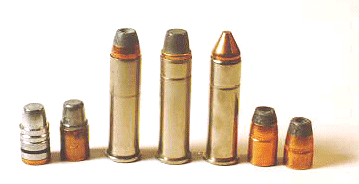
Commercial rounds that come ready to fire, like the .357 armor piercing round above, can be trusted. (Note this AP bullet is 30 years old and is no longer available) However, even commercial rounds are mass produced, and some small inconsistentcy in powder charge is possible. For optimum accuracy, your hand loads should be all carefully measured. You can weigh the bullets, too, to see if there is any difference in weight. If a group of bullets do not weigh the same, go to another maker or brand.
Bullet Shapes
- Bullet shapes are for several purposes. The shape of the TIP is often for the kind of hunting or target shooting you are going to do. For pistol target shooting, the wadcutter with its flat nose cuts a perfect round hold in the target. Many hunters also swear by the knock-down power of the wadcutter. If you use a pointed bullet and it exits the game, not all the stopping power of the bullet was used. If it stops in the game and does
added tissue damage, the game will more likely be stopped cold. The lowly wadcutter fits this bill. - For the same reason of knock-down power, the hollow point bullets that will easily expand upon entering game, will leave all the power of the bullet in the game and not exit to spend the rest of its energy outside the game. Not all hollow points expand in game as they should. You should check your bullets shooting into a stack of magazines (standing on end) in a cardboard box to see what happens to the bullets, remembering that game is softer than
magazines (at least small game is). This same backstop will show you what the penetrating power of each bullet is going to be. Further, I know some shooters who have a special wood frame filled with magazines and a steel plate at the end to insure stopping of lead bullets, then they can collect all the lead and re-melt it into new lead bullets. This is the ultimate in cost savings of reloading. You pay only for the primer and powder. - Sometimes the type of gun determines the shape of bullet. In the .45 ACP,
the round nose feeds the best and rarely jams. However, the semi-wadcutter, with it’s extended nose will usually feed just about as well. A wad cutter may not feed well at all. There was an automatic made for the .38 special
round and ALL it would shoot was the wadcutter because of the magazine size. You may have to determine what kinds of guns you own will tolerate what types of bullet design. - In the high-power rifle bullet design, the whole shape of the bullet will determine its travel and speed. Certainly pointed bullets for long range and high speeds are best. Some bullets have been aerodynamically designed, like a supersonic jet, and travel with minimum wind resistence. For LONG, over 200 yard shots, you want this kind of bullet. If the wind is blowing hard, a heavier bullet will be less afftected by the wind than a lighter one, but the heavier bullet will drop more at extended ranges. For game, the soft lead tip or special copper hollow point that will mushroom perfectly upon contact with game is most desireable. In brush country, a round nose bullet will be the better choice. The preferred BEST Rifle bullets for long range target shooting accuracy are usually the HPBT, which is the Hollow Point, Boat Tail bullets of several manufacturers. Sierra calls their whole series of HPBT bullets, the “MatchKing” series.
- In the discussion of high powered rifle bullets, I have almost always been talking about jacketed bullets. You certainly can use all lead bullets in the 30-06 for example, if you wish. Just load it WAY down from what you would use with a jacketed bullet. For example with a 100 grain lead semi-jacked “plinker” you would use 48 grains of 3031 powder for nearly 3,000 FPS. With a 100 grain all lead bullet, just use about 32 grains for a start and see what kind of load you get. It’s a very plesant round and does not recoil or make very much noise. At these reduced velocities, the chance of leading in the barrel is greatly reduced. The rule of thumb is always: when using a heavier bullet, use less powder for the same pressures. Heavier bullets makes the powder burn faster, as do jacketed bullets versus lead bullets. Faster burning creates greater pressures (and of course velocities).

